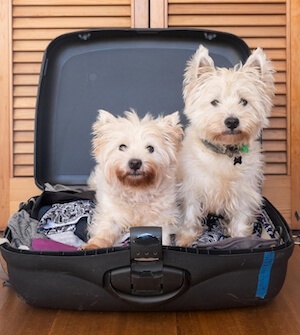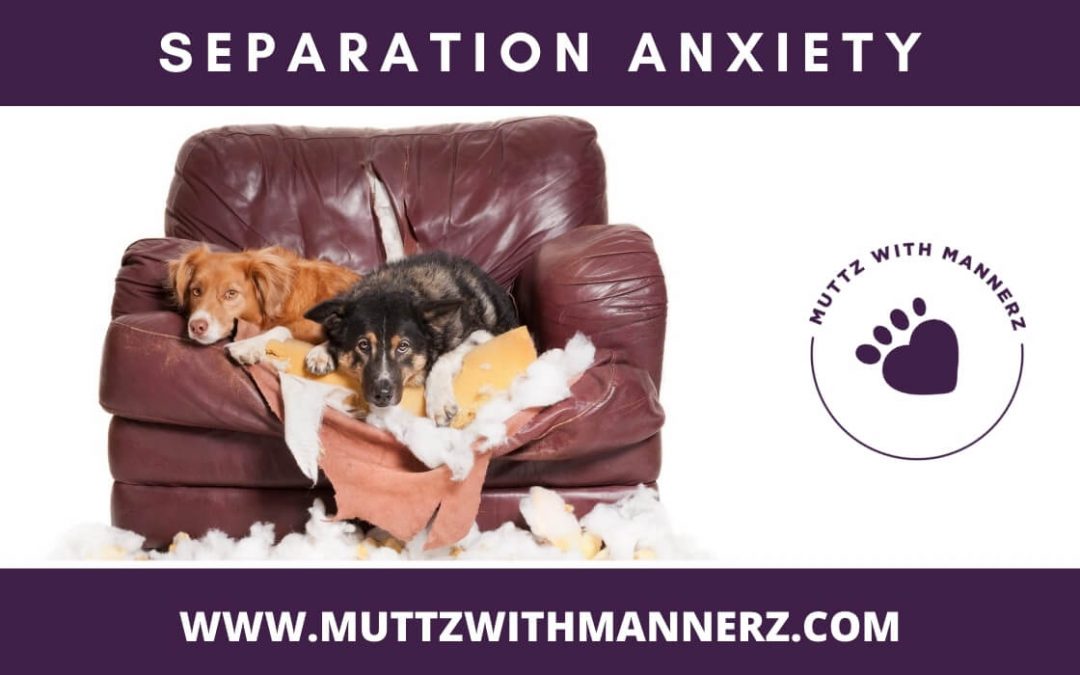Separation anxiety is a result of stress, depression, and anxiety that is usually triggered by the separation of people dogs are attached to.
Dogs developing separation anxiety is very common, especially as COVID-19 restrictions start to ease up and paw parents go back to work or school.
At the beginning of the quarantine, people started to work from home, which means spending more time with your dog and changing their routine.
Some other factors that may cause separation anxiety are:
- Dogs previously in shelters or re-homed, that may have experienced abandonment or a loss.
- A sudden change in schedule.
- The sudden loss of a family member (divorce, death in the family, someone moving out).
- Move to a new house.
Separation anxiety is more than a whimper when you pick up your keys or leave the house. To some, it may seem like an untrained dog but the unusual behaviour your dog is exhibiting in your absence may be signs of separation anxiety.
These behaviours include:
- Barking, howling or whining excessively.
- Chewing and destroying property (shoes, pillows, furniture, clothing).
- “Accidents” – urinating or defecating in the house.
- Drooling, panting, or salivating excessively.
- Trying to escape (chewing/scratching at crates, doors, and windows).
- Intense pacing.
Some of these symptoms may result in self-injury, so in order to prevent your dog from developing separation anxiety, it’s important to help your dog be independent of the family. If you play with them all day they will get used to your constant attention and will depend on your presence, even when life returns to normal after COVID-19.
Some tips include:
- Keeping your dog’s schedule consistent (walks, meals, playtime, rest time).
- Leave your dog alone at home a couple of times a week
- Make sure your dog gets tons of exercise, mentally and physically as a tired dog will be less stressed.
- Provide new toys to encourage independent activities.
- Consider daycare so they have some time away from home to socialize with other dogs and daycare staff.
- Consider a dog walker to come in daily to provide them with exercise and some companionship.
If your dog has a mild case of separation anxiety, the best way to rectify the problem is by counter-conditioning.
This means associating their fear, in this case, your absence, with something the dog loves like treats or toys. The purpose of this is to teach your dog to enjoy or at least tolerate being alone.
Start your counter-conditioning with short separations and then gradually increase the duration over a span of a couple of weeks. Before you leave, give them toys (such as a KONG) and treats that will distract them and occupy their time and minds.
Using a crate for them to be alone in can also be helpful. Here is an article from our blog on crate training.
 Lastly, don’t make a big deal of your arrival or departure, act calm and ignore your dog for the first few minutes when you arrive home before engaging them or opening the door to their crate.
Lastly, don’t make a big deal of your arrival or departure, act calm and ignore your dog for the first few minutes when you arrive home before engaging them or opening the door to their crate.
If your dog has a more serious case of separation anxiety, they won’t be easily distracted with treats. You have to slowly familiarize them with your absence.
Dogs can usually tell when you’re about to leave, like when you pick up the keys or put on your shoes. Do those things and then don’t leave. If you do this over and over, multiple times a day, it will show your dog that he shouldn’t get worried about you doing that.
Once they start not worrying about that, try asking your dog to stay, then enter a room with the door closed, but then reappear after a couple of seconds. Increase the time the door stays closed. Then start doing the things you normally do before you leave, such as putting on a jacket and repeat. Your dog should slowly be getting used to not seeing you for a couple of minutes. Then start using the outside door, but NOT the one you use daily, and make sure your dog is relaxed before you leave. Again, remain calm when you leave and return – and then little by little, increase the time you’re gone. Remember, you’re the only one who can judge how long you should be separated based on the condition of your dog.
Enrolling your dog in daycare can help boost their confidence and socialization skills. These help your puppy or dog get and stay comfortable, and exercised, in a positive, safe, and clean environment.
Our goal at Muttz with Mannerz is to help your puppy or dog be a well-mannered, happy companion wherever they go.
Look forward to seeing you at Muttz with Mannerz!
To help your dog with separation anxiety, call us for a consult or consider us for doggie daycare this fall.
Visit https://muttzwithmannerz.com/doggie-daycare for more information.

